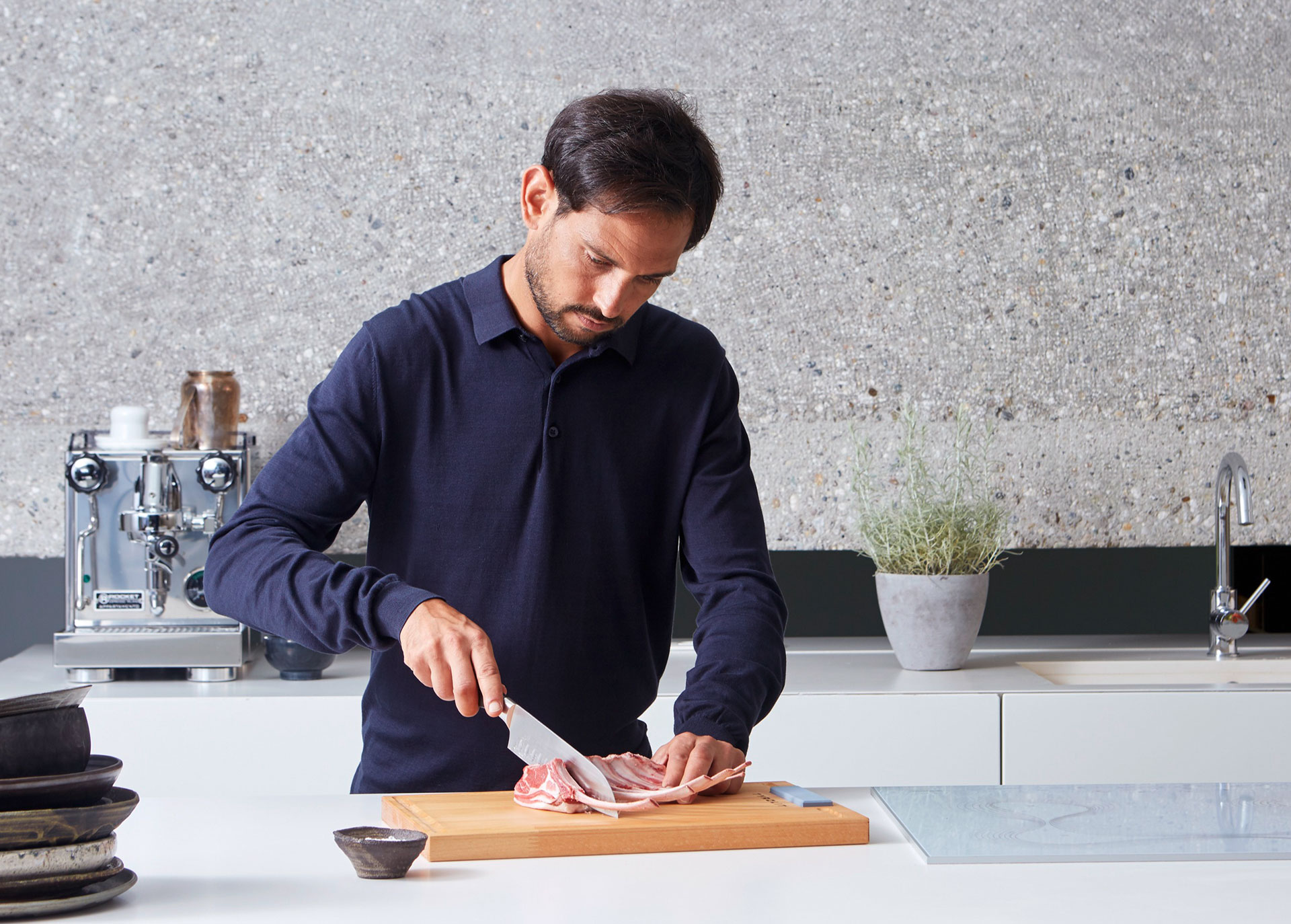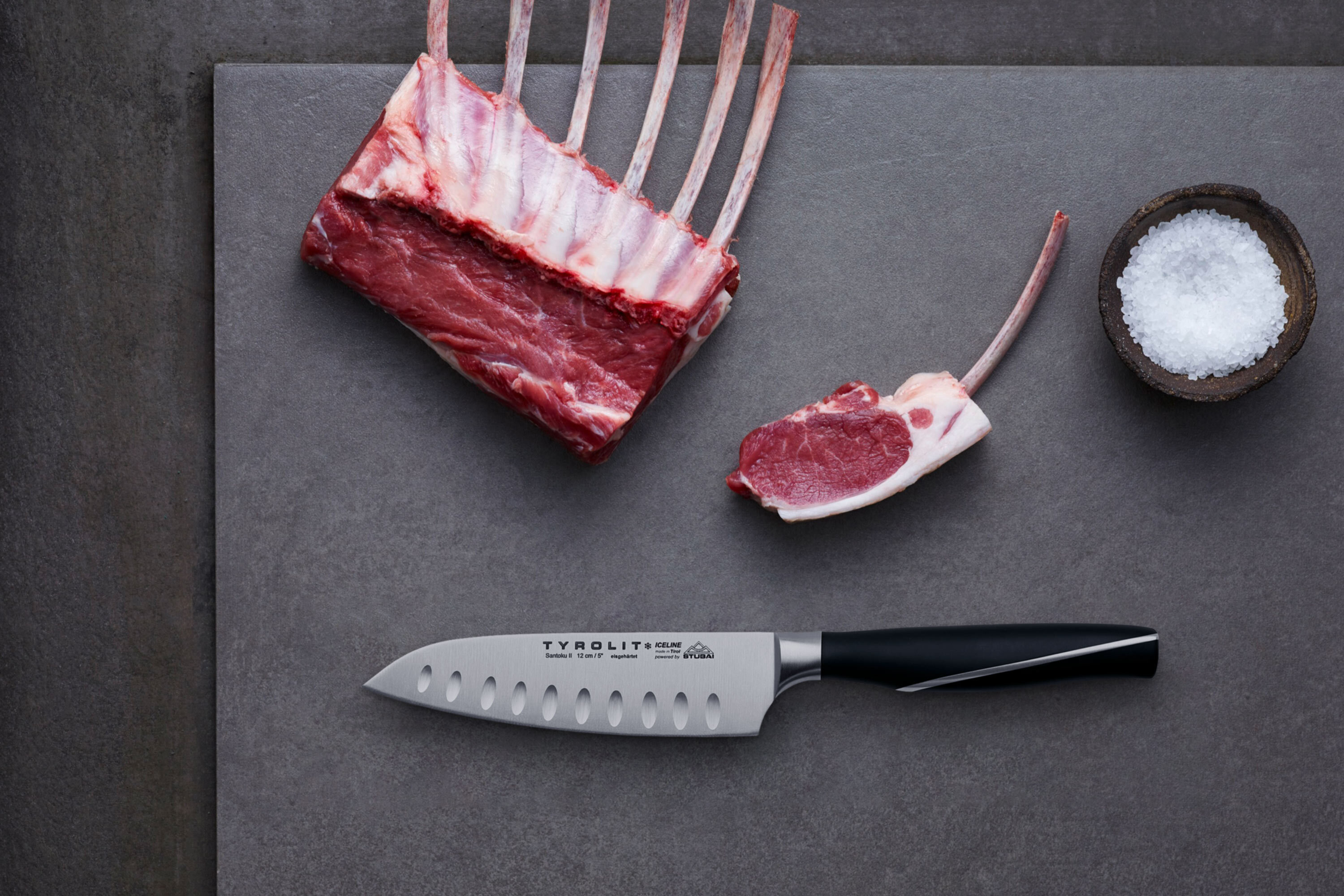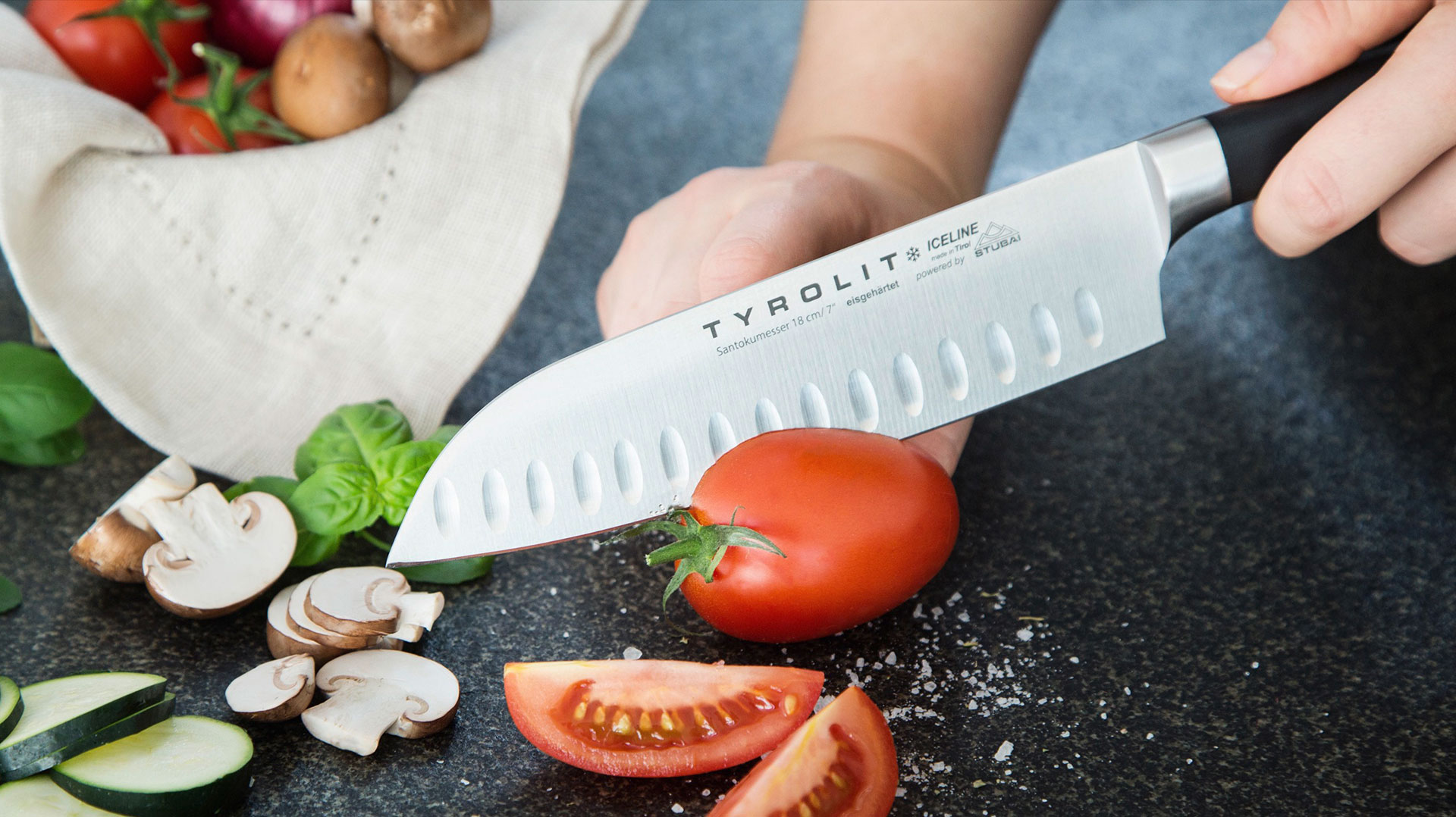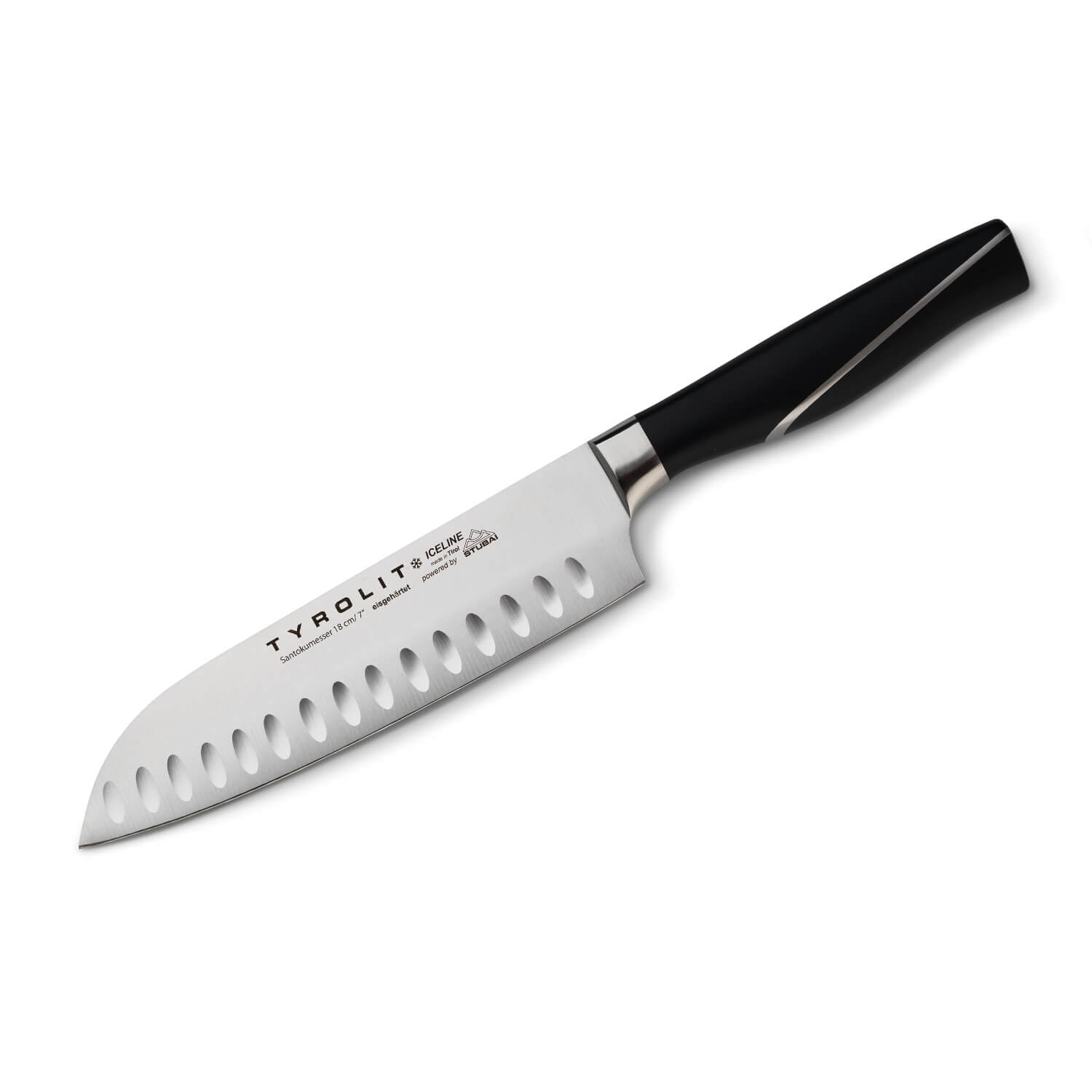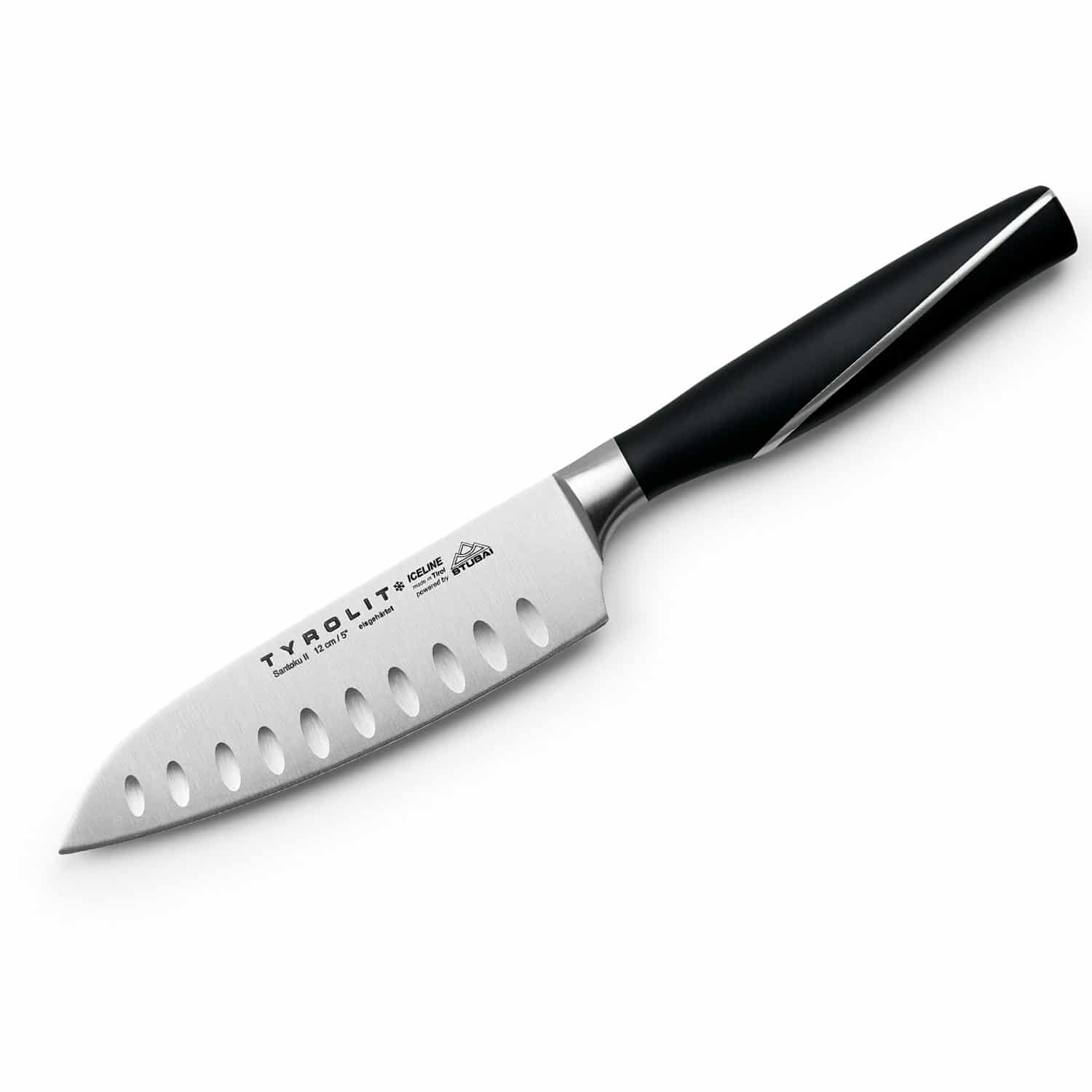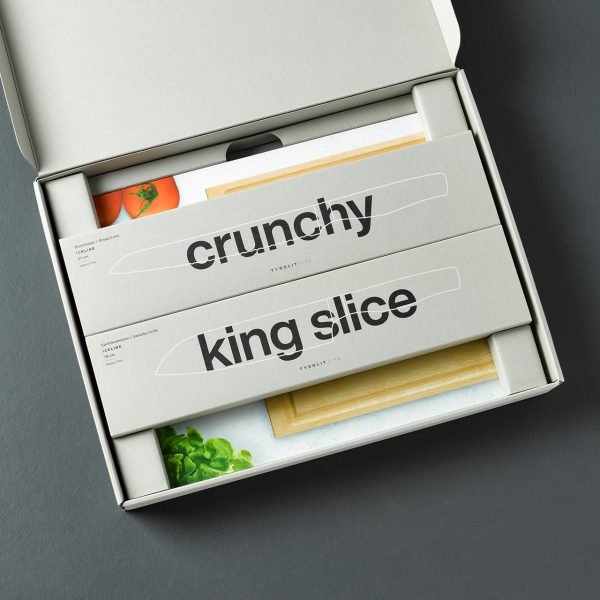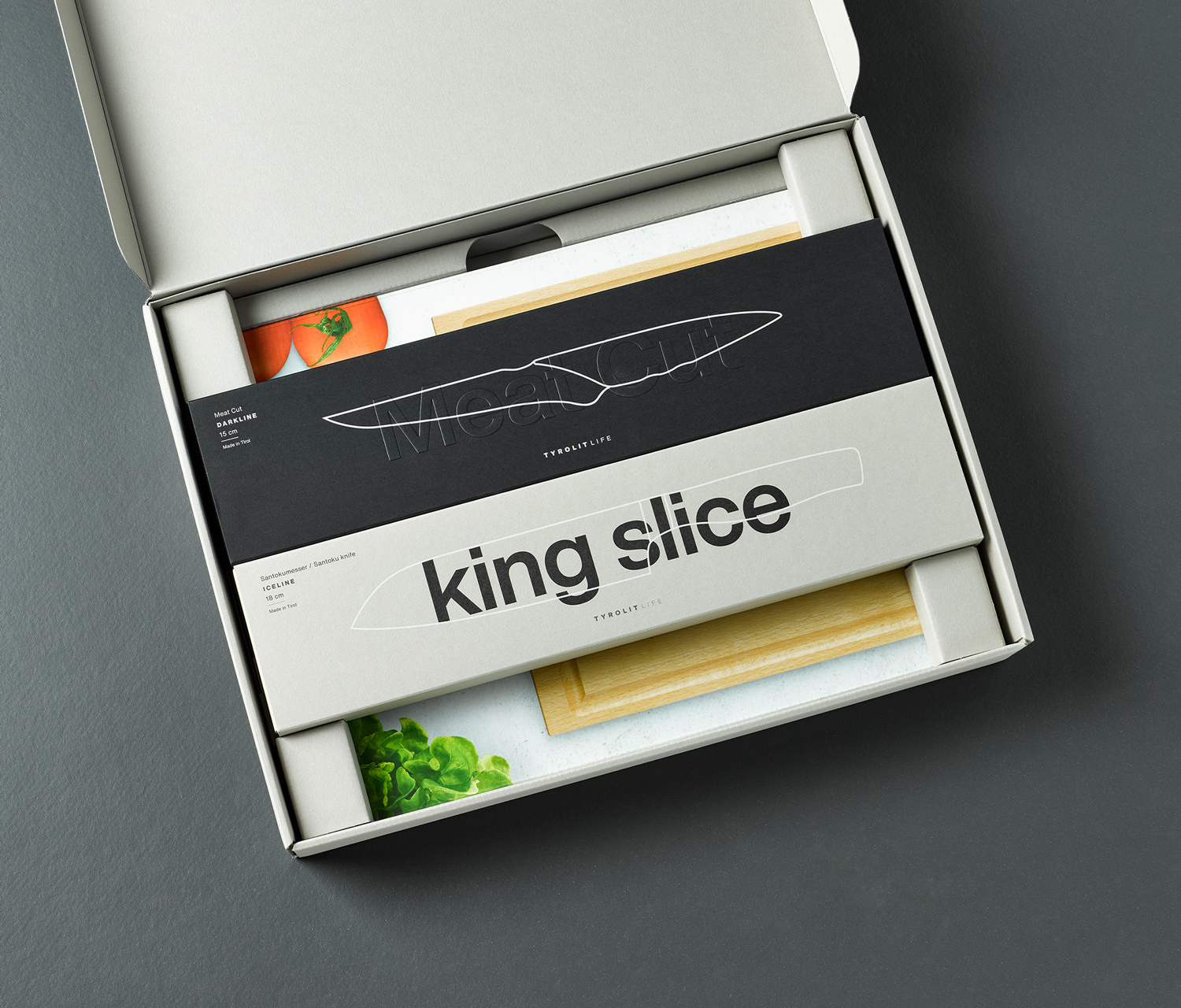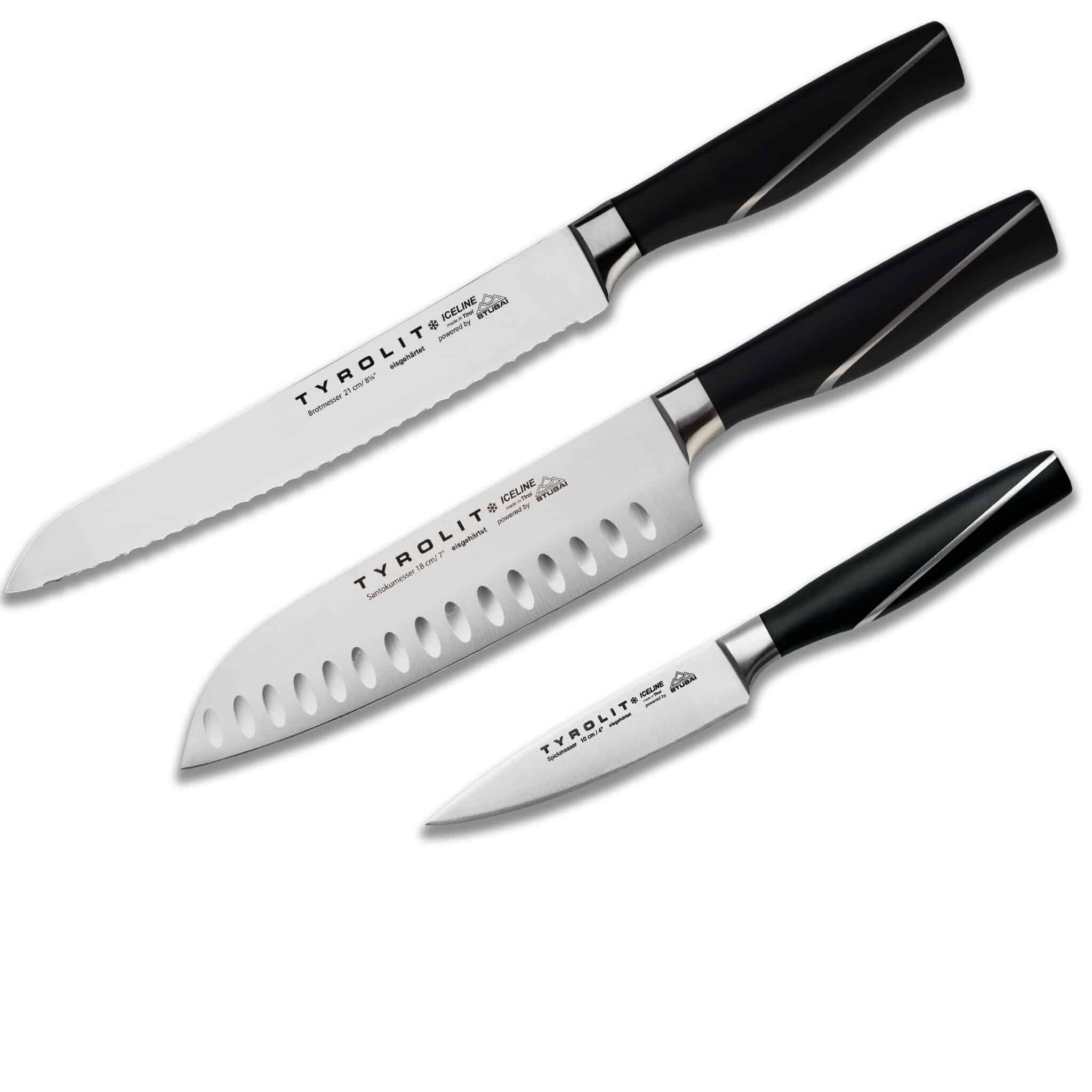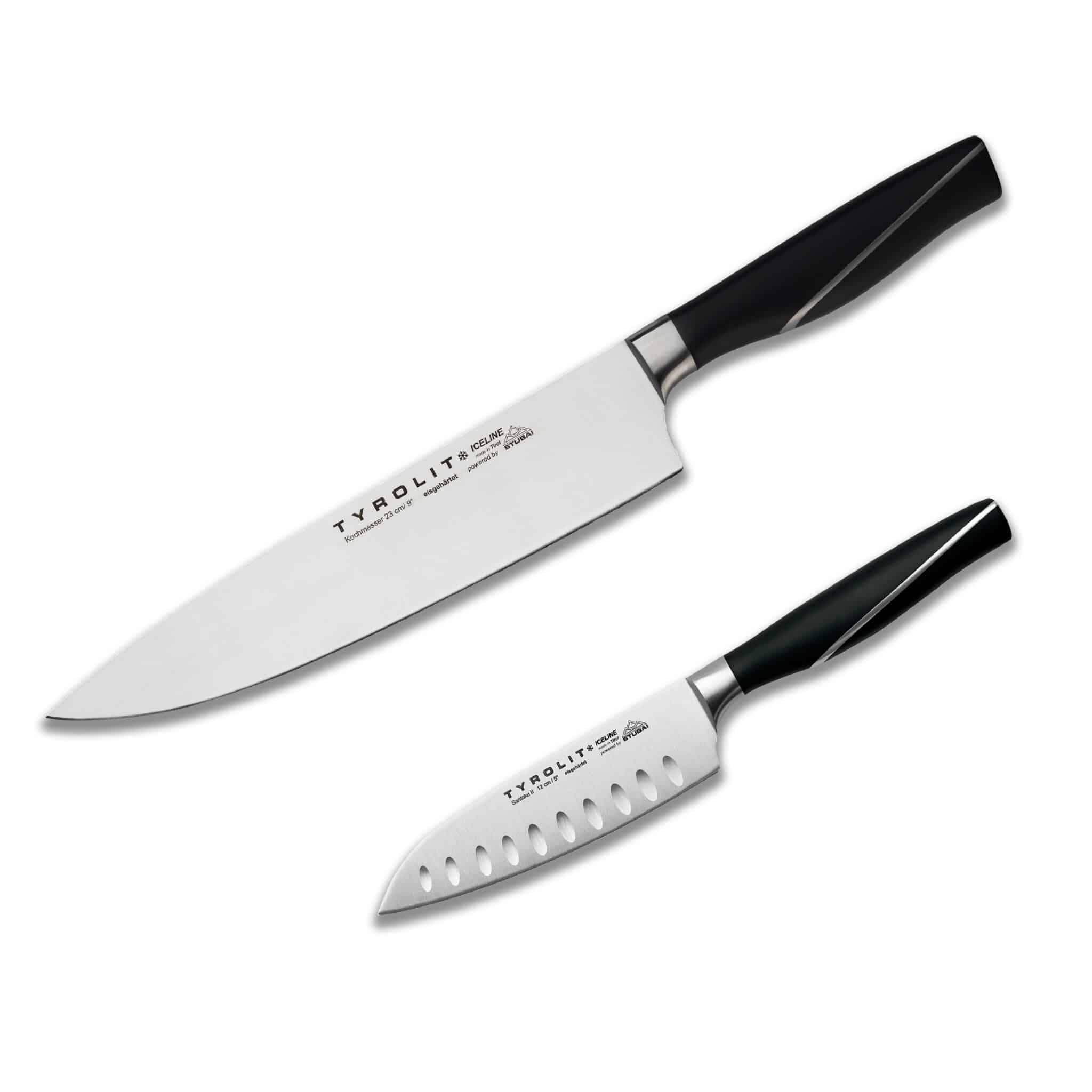Japanese Knives – A Glimpse into a World of Perfection
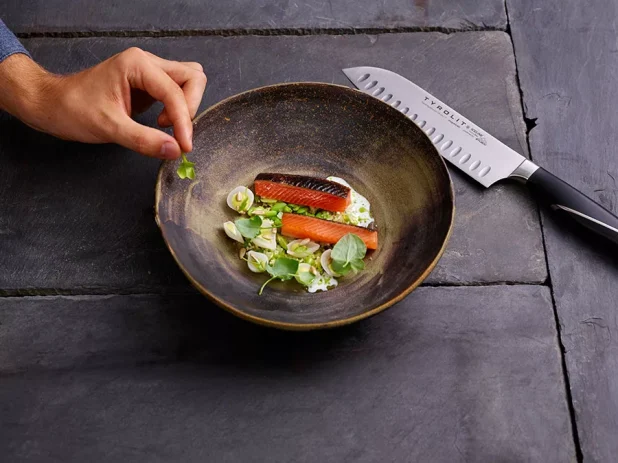
The fascination for Japanese knives, so-called santoku knives, extends far beyond the borders of Japan and has also found its way into European kitchens in recent years.
The basics of making and using these special kitchen tools are deeply rooted in Japanese culture and the history of the knife. They reflect a centuries-old tradition of blacksmithing, in which every knife is considered not only a commodity, but a work of art.
Importance of Japanese knives in kitchen culture
In Japanese cuisine, aesthetics play a crucial role; as the saying goes, we eat with our eyes first. This is where the precision and edge retention of Japanese knives come into play. From preparing sashimi to the precise cutting of vegetables – a good Japanese knife is deemed an essential tool for anyone who seeks perfection
Japanese Kitchen Knives Compared to European Knives
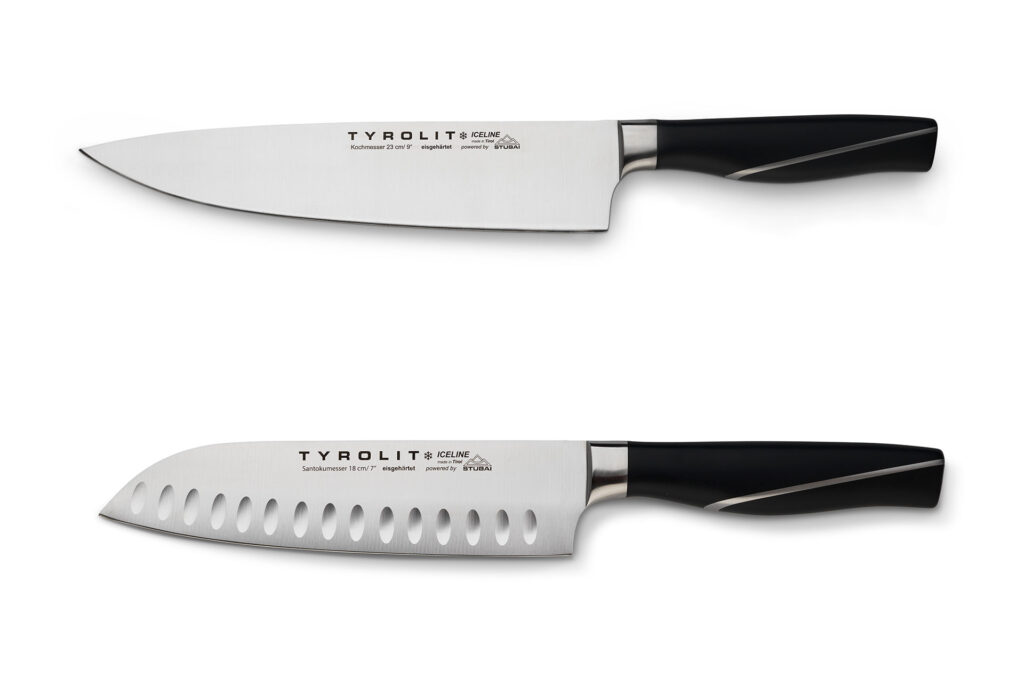
European kitchen knives often present themselves as versatile tools, perfect for everyday use in the kitchen. In contrast, each Japanese knife, whether Gyuto, Nakiri or Deba, has a special function. Although this specialization allows for precise cuts, it takes a whole collection of Japanese knives to cover everyday needs in the kitchen.
In addition, there are significant differences in the material. Japanese knives, made of special steels like Aogami, are extremely sharp. Comparable European knives are made of high-quality stainless steel and score with durability and less maintenance.
Regarding the sharpening technique, Japanese knives are often sharpened on one side only, ensuring extreme sharpness. However, this can pose a challenge for beginners who have not yet mastered the specific cutting technique. In contrast, European knives are typically sharpened on both sides, making them more user-friendly.
When is a European knife set a sensible choice?
A European knife set should not be missing in the kitchen knife basic equipment. After that, there are no limits. Simply put, it offers robustness and versatility at a more affordable price. Ideal for beginners, amateur chefs and the majority of chefs in Europe who value practicality and precision.
While Japanese knives captivate with their precision and craftsmanship, European knives also boast significant advantages that should not be overlooked. Each has its rightful place. If you aim to enhance your cutting skills further or have already mastered them, Japanese knives offer a new level of challenge. Furthermore, Japanese knives possess a distinctive allure with their Damascus steel designs and structures, rejuvenating the cutting experience.
History and Blacksmithing: The Soul of Japanese Knives
Imagine a centuries-old tradition in which the blacksmith practices his craft with a devotion that borders on art. Welcome to the fascinating world of Japanese knife making, a discipline that is far more than the sum of its parts.
What are the advantages and disadvantages of the Santoku knife?
The Santoku knife, a gem of Japanese blacksmithing, has long claimed its spot in modern kitchens. As a versatile kitchen tool, it is often regarded as the Japanese equivalent of the classic chef’s knife. But what advantages and potential weaknesses does this knife have? Find out more in our article.
From samurai sword to kitchen knife: the evolution of Japanese blacksmithing
The history of Japanese blacksmithing is a journey through time that originates from the manufacturing of samurai swords. This time-honored craft technique has been adapted and refined over the centuries, culminating in the extraordinary kitchen tools we are familiar with today.
The swordsmithing techniques live on in the blades of the Gyuto, Santoku, and Nakiri knives.
Seki: The Cradle of the Blade Masters
Not far from the vibrant metropolises of Japan lies Seki, a city that is considered the heart of Japanese knife manufacturing. Here, old knowledge and modern innovation combine to form a unique interplay.
In Seki’s workshops, blacksmiths swing the hammer to the rhythm of a culture that shapes more than just metal — it shapes history, culture and an inimitable quality that is appreciated worldwide. Among other things, the well-known Kasumi knives are forged here.
Handcrafted vs. Machined: A Comparison of Methods
Although industrial progress has not passed the doors of Seki’s forges, there is still a considerable difference between hand-forged and machine-made knives.
A hand-forged part of the knife, such as a blade, are unique pieces that carry the soul and experience of the master. They stand for individuality, dedication and the highest quality. Industrially manufactured knives, on the other hand, score points for consistency and often also for a cheaper price, but cannot achieve the profound craftsmanship of a handmade masterpiece.
Japanese Knife Making: A Symbiosis of Art and Technology
In the manufacturing process of Japanese knives, selecting the appropriate steel is crucial. Materials like Aogami (Aogami steel, which is part of the blue paper steel group, stands as one of the hardest knife steels globally) and Shirogami (white paper steel, bearing a strong resemblance to Aogami, yet is an unalloyed, pure carbon steel) play a pivotal role
The carbon content in Shirogami steel is also up to 1.4%, while forgoing the use of tungsten and chromium. This steel is particularly popular among blacksmiths due to its high carbon content and hardness. Additionally, there are knives made of Damascus or Yasuki steel.
Importance of HRC (Rockwell hardness) and cut retention
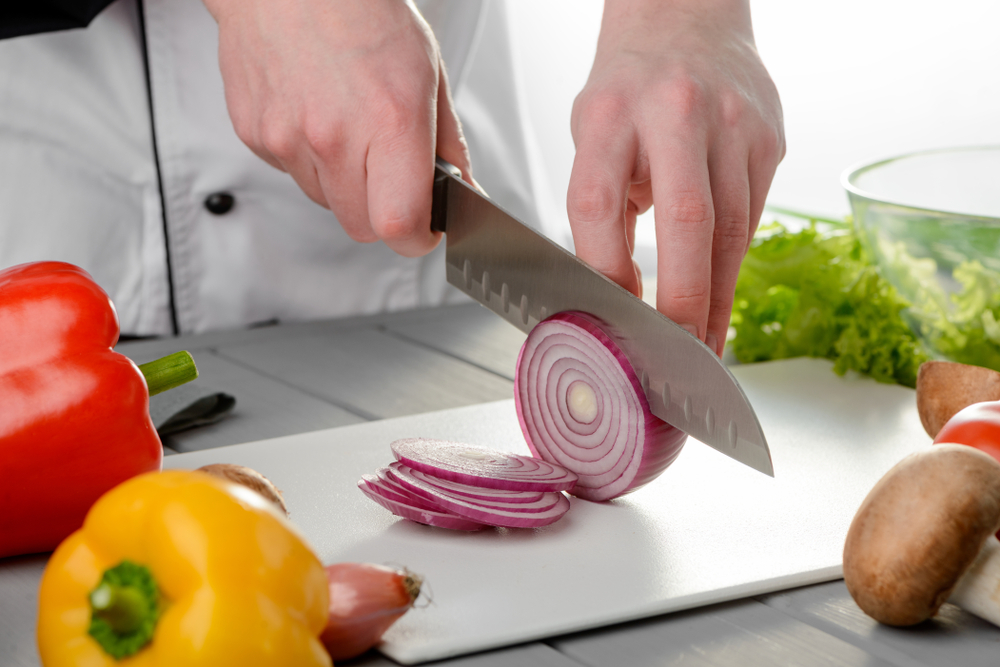
In the world of knives, Rockwell hardness (HRC) is a crucial factor that affects the quality and performance of a knife. A high HRC value indicates a higher hardness of the steel, which in turn ensures excellent cutting stability. This means that the knife retains its sharpness over a longer period of time and needs to be re-sharpened less frequently.
The first step is to heat the steel piece in the furnace to a high temperature until it becomes red-hot. The metal is then folded and hammered several times to achieve a homogeneous structure and remove any impurities.
After shaping the blade, it is cooled, often in an oil bath, to stabilize the metal’s molecular structure. This process ensures the blade achieves the necessary hardness. Then, the knife is sharpened, a step that varies depending on the type and purpose of the knife. Many Japanese knives, like the Yanagiba, are sharpened on one side only, which contributes to their exceptional sharpness.
The handle, often crafted from traditional and noble woods (such as Ho wood, ebony, rosewood, curly birch, noble cherry, olive wood, or walnut), is typically mounted last. Some premium knives additionally feature an end cap made of buffalo horn, which not only adds aesthetic appeal but also contributes to the knife’s balance. Moreover, there are handles made of plastic, like Micarta (a durable and robust composite material).
Finally, the quality inspection takes place, during which the knife’s sharpness, balance, and edge retention are tested. Only if the knife passes this rigorous control will it be released for sale. Thus, a high-quality tool is created, valued in professional circles for its precision and durability. It is favored by both professional chefs and home cooks alike.
Japanese Kitchen Knives: Types, Blade Shapes, and Uses
Japanese cuisine is known for its variety and sophistication, and this is also reflected in the numerous types of knives used in its preparation. Each of these knives is a specialist, perfectly adapted to its respective role in the kitchen.
7 Benefits of a Small Santoku Knife
A small Santoku knife can easily outdo its big brother in terms of versatility. In this article, you will learn about the advantages of these knives.
Gyuto – the all-rounder of Japanese cuisine
The Gyuto Hocho, crafted from three-layer steel, is the Japanese equivalent to the European chef’s knife and a true jack-of-all-trades. Whether it’s meat, fish, or vegetables, this knife can cut through almost anything. With its double-beveled blade, it merges the best of both worlds, making it perfect for chefs who prefer to use just one knife for a variety of tasks.
Santoku knife – the Japanese chef’s knife
What exactly is a santoku knife? The Santoku knife is a true all-rounder in the kitchen, like the classic chef’s knife in Europe. The name “Santoku” translates to “three virtues”, indicating its versatility in cutting meat, fish and vegetables. These knives are known for their uncompromising sharpness and unique blade shape that allows for efficient and safe handling.
With a straight upper edge and a wide blade back, Santoku knives offer optimal protection for the fingers and lie well in the hand. Their light weight and the balance between the blade and handle make them a preferred tool for both professional chefs and home cooks.
Tyrolit Life offers two versions of santoku knives, both manufactured to premium quality standards. These knives are produced in collaboration with the tool expert Stubai in Tyrol, ensuring exceptional performance for any kitchen. The santoku knives come in two distinct sizes – 18 cm and a smaller santoku at 12 cm. The unique granton edge minimizes the sticking of food to the blade, facilitating easier cutting, chopping, and dicing.
Nakiri and Usuba – Vegetable Magicians
Those who enjoy chopping vegetables will fall in love with Nakiri and Usuba knives. These are specially designed as vegetable knives. The Nakiri knife is sharpened on both sides, making it suitable for both right-handed and left-handed individuals. While the Nakiri is more commonly used for home cooking, the Usuba typically finds its place in professional kitchens.
Deba – The Fish Specialist
No other knife masters the art of filleting as skillfully as the Deba. Its robust yet sharp blade slices through fish bones as effortlessly as it does meat and skin, without damaging the delicate fibers.
Cut correctly with a Santoku knife – that’s how it’s done!
The Santoku knife – an all-purpose knife rooted in Japanese tradition – has long since carved out its place in modern kitchens. Its distinctive shape not only makes it visually striking but also excels in slicing a variety of ingredients. But how does one properly use a Santoku knife to cut? All the details in the article!
Wasabi, Yanagiba, Sujihiki and Sashimi Knife (the traditional Japanese fish knife) – the masters of finesse
These knives are the first choice for preparing sashimi or filleting fish and meat. The extremely sharp, long blades make it possible to glide through the product in a single stroke, guaranteeing a clean and precise result.
Petty – the little all-rounder
The Petty knife is the Japanese equivalent of the European paring knife and is ideally suited for smaller cutting tasks, from peeling fruit to chopping herbs.
Kiritsuke, Bunka and Co – The Exotics
For more specialized applications, there are knife types such as Kiritsuke and Bunka. Although they are less common, they have a fixed role in certain areas of Japanese cuisine.
In addition to these specialized types of knives, there are of course also Japanese bread knives and meat knives, each of which has its own unique characteristics and areas of application.
A trip into the world of Japanese knives is like a culinary journey through Japan itself: multifaceted, specialized and full of surprises. Each of these knives brings its own personality and expertise to your kitchen, making every cutting experience a true delight.
How much does a Japanese knife cost?
The price range for Japanese knives is very wide and can range from around 50 euros for a simple yet high-quality model to several hundred or even a thousand euros for a hand-forged masterpiece. The price depends on the material, blade length and manufacturing method.
A hand-forged knife from a renowned blacksmith in Seki can certainly be considered a luxury item, while industrially manufactured models are often cheaper, but still of high quality. At Tyrolit Life, for example, you can get a high-quality stainless steel Santoku knife starting at 59.90 euros.
The key to longevity and precision
The fascinating world of Japanese knives does not end with the purchase; rather, it demands meticulous cleaning, storage, and care through sharpening to maintain its excellent performance over the years.
Cleaning
Although it may be tempting to clean the knife in the dishwasher, it is advisable to refrain from this practice. The high temperatures and aggressive detergents can damage the steel and blunt the blade. Instead, the knife should be rinsed and dried by hand immediately after use to ensure its longevity.
In short, the proper care and sharpening of your valuable Japanese knife is not only a matter of aesthetics but also of functionality and longevity. Therefore, always maintain and clean your knife.
Storage
Apart from the sharpening tools, proper storage of the knife is equally crucial. A knife block is a good option, but only if it is used correctly. Blades should never be dropped into the slots; instead, they should be carefully inserted to prevent wear or even damage.
Tyrolit Life offers a particularly interesting solution here. With the knife block plus in black or silver, the manufacturer has created a magnetic knife block that not only impresses visually, but also scores with an integrated sharpening system. Two important aspects of knife care can be covered here. Care and safety! Handmade in Tyrol, this premium product makes a clear statement in terms of functionality and design. The perfect storage for your santoku knife and other kitchen knives.
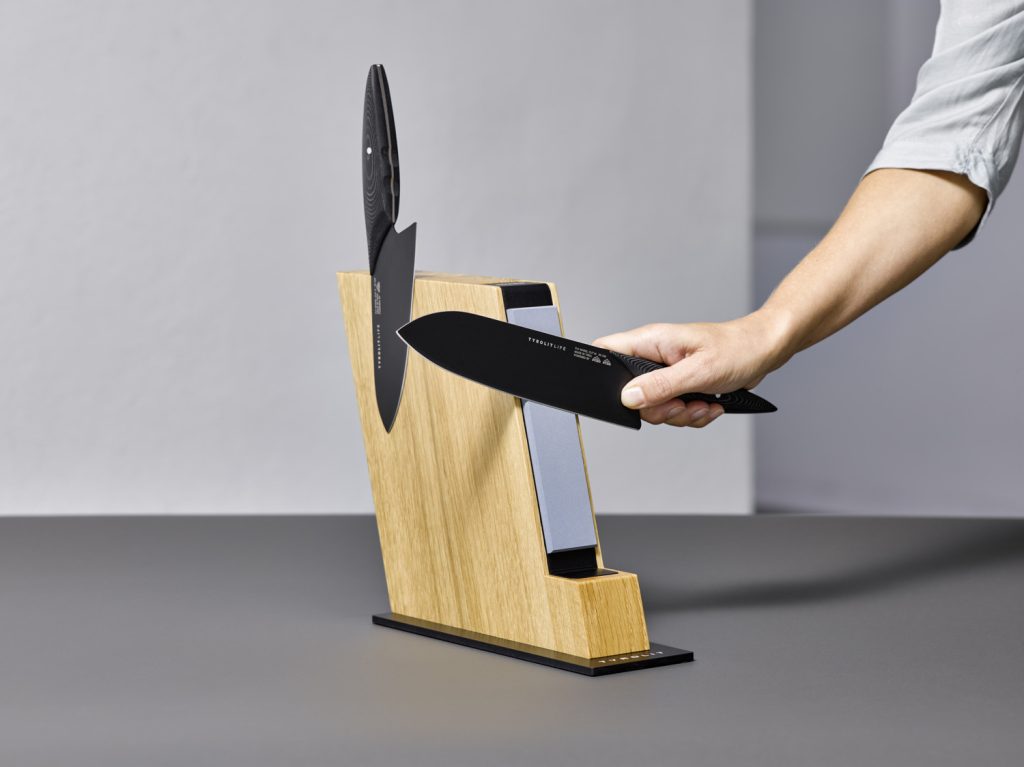
Care through regular sharpening
An essential tool for sharpening knife blades is grinding stones of various grit sizes. The grit determines how fine or coarse the grinding result will be. Coarse stones are used for rough pre-sharpening, while fine stones are used for polishing the blade.
Tyrolit Life is a company that specializes in the sharpening and honing of knives, offering high-quality solutions that are visually appealing as well. The compact knife sharpener is especially notable for being space-saving. This two-sided whetstone features two different grits
On the other hand, there is the MK2 acrylic knife sharpener in an elegant acrylic design. The preset sharpening angle of 15 degrees allows uncomplicated and safe handling. This knife sharpener is also available in a wooden version
When it comes to sharpening your knives, Tyrolit Life is your competent partner.
Conclusion
When buying a Japanese knife, you should consider several factors, including the specific intended use, the material of the blade, the HRC (Rockwell hardness) and, of course, the budget. A high-quality knife is an investment that will last for many years with proper care, so it is worth choosing carefully.
Japanese knives have taken a firm place in the global kitchen landscape. They are no longer just the tools of sushi masters, but can be found in professional and hobby kitchens around the globe. Their precision and quality have made them an indispensable part of modern cuisine and their popularity seems unbroken. They are a true expression of expertise and tradition, adapted to the needs of today's chefs.
Japanese Knife FAQs
What is the best Japanese knife?
What is so special about Japanese knives?
How much does a Japanese knife cost?
What are the names of the sharp Japanese knives?

